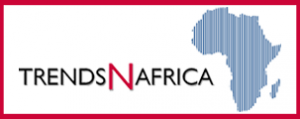
(4 Minutes Read)
Intra-trade and investment flows are achieved by the harmonization of trade rules, tariffs, and investment criteria to provide for a seamless flow of trade and investments. Undeniably, the world’s largest trading bloc -the African Continental Free Trade Area (AfCFTA) – has to make a quantum leap to align with the parameters of the successful blocs.
Pan-Africanization, a concept espoused by the continent’s political leadership envisioning the formation of the African Union by 2063, is the cherished goal for achieving the economic dominance of a region that bypassed development and exploited for centuries.
The sixth mid-year coordination meeting of the African Union just concluded in Ghana’s capital Accra. Aptly themed-Educate and Skill Africa for the 21st Century, the meeting brought together the AU, the Regional Economic Communities (RECs), and the AU members, among others. That provided a platform for assessing the progress, identifying the glitches, and crystallizing the futuristic programs for Africanization.
To take stock of the results of the meeting and its takeaways, one has to go beyond the veneer of what was reported and in the public domain. Leaders were brutally frank in expressing their views and perceptions. Most candid admission was the realization that somewhere down the line, Pan-Africanism lost its steam for various reasons.
A proper definition of Pro-Africanization is important to understand the nuances of that evolving concept. The nebulous concept presupposes the harmonious existence of AU, Regional Economic Communities (RECs), and regional mechanisms. These entities should jointly unleash creative vibes that can realize the continent’s full potential in every sense. The disequilibrium in marshalling these entities in unison spells antithesis to the integration. It manifests in many forms and hues. Non-functional or even disintegration of regional blocs as evidenced in the ECOWAS with the formation of AES, a grouping of Mali, Niger, and Burkina Faso is one such example. Even where the blocs do not have visible disintegration, systems are not functioning at the desired pace and order to achieve the set goals.
Market integration should manifest in expanding the intra-trade and other commercial interfaces. A comparison with EU and ASEAN intra-trade and investment flows would be more appropriate. Intra-trade and investment flows in these regions are significantly higher. That was achieved by the harmonization of trade rules, tariffs, and investment criteria to provide for a seamless flow of trade and investments. Undeniably, the world’s largest trading bloc -the African Continental Free Trade Area (AfCFTA) – has to make a quantum leap to align with the parameters of the successful blocs.
Issues that have to be addressed include mechanisms for trade facilitation including tariff adjustments at a reciprocal basis rather than unilateral reductions, the signing of new protocols for the mobility of people and capital across borders, and above all the evolution of a mindset that promotes African ethos and brotherhood. This presupposes a focus on education and skills to improve the employability of Africans. Also, new protocols have to be drawn up for promoting digitization, trade in services, and an arrangement for faster integration of agricultural goods to cater to the acute shortage of foodstuffs in certain pockets, while the continent boasts of having the highest acreage of arable land.
Equally significant is the value addition that can promote higher export earnings and gainful employment. Happily, there have been policy shifts consciously engineered by the AU and other development agencies to pace up the process of industrialization. Yet, it has to pick up accelerated momentum as investments coming from beyond the continent lays importance on automation and capital intensity rather than labour-intensive production processes, even in segments like automotives, pharmaceutical, transport and logistics, and agri-business, the priority sectors for industrialisation under the AfCFTA.
The Ghana Declaration resonates with stress on developing African financial institutions to muscle a growth model that is suitable to the continent’s topography and geography and not the one dictated by the multilateral organizations, which often is bereft of hard realities on the ground. Evolving a rating agency that is sensitive to the contextual situation of Africa Inc has been highlighted. Undeniably, AU and its supporting organizations have to go much faster in achieving the twin goals of developing strong financial institutions and strong and credible rating agencies to strike a development path of its own.
Beneath these growth models suggested, lies the need for Africans speaking in one voice at international forums like the UN, World Bank, the IMF, etc. Differing perceptions and approaches may please the developed world to create a wedge among the partners, but that trend would grossly undermine Africa’s and Africans interests. Significantly, that is also one of the highlights of the Ghana Declaration.











